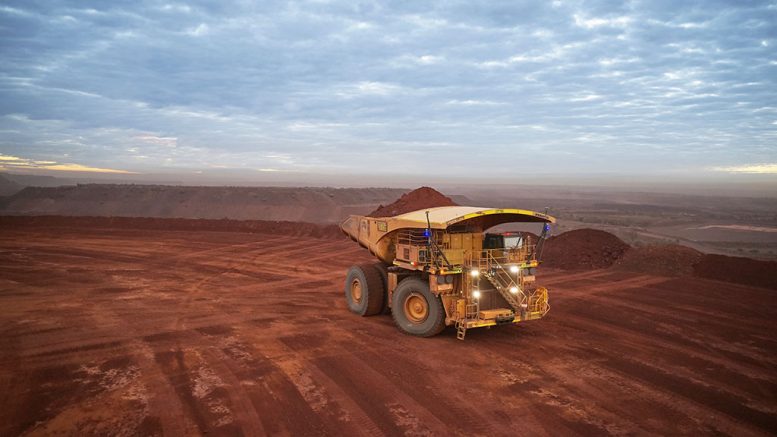Australian iron ore major Fortescue Metals Group (ASX: FMG) said today it would reevaluate an expansion plan at one of its iron ore mines in the Pilbara region, after an Indigenous group said the project threatened sacred sites, including a 60,000-year-old rock shelter.
Fortescue’s decision comes after fellow miner Rio Tinto (NYSE: RIO; LSE: RIO), the number one iron ore producer, blew up a 46,000-year-old sacred indigenous site in Western Australia in May.
While the company has apologized for the decision, CEO Jean-Sebastien Jacques revealed today that it had other options, but rejected them.
Rio Tinto’s boss acknowledged that the move allowed the company to access about 8 million tons of high-value iron ore.
The world’s second-largest miner recorded about US$4.6 billion in profits from its iron ore unit in the first half of the year.
In light of the global uproar Rio’s blasting caused, Fortescue has asked the government to delay a decision on a heritage exemption request, which is part of a mine expansion plan. The project would threaten sites of cultural significance to the Wintawari Guruma people.
The planned Queens mine expansion, part of the Solomon project, has a footprint covering more than 70 heritage sites, including rock shelters, campsites and rock paintings and engravings.
Testing of stone tools and other artifacts, found more than a metre below the surface at the site, showed the first two rock shelters’ use and occupation by humans dated back 47,800 years ago in one, and approximately 60,000 years in the second, The Sydney Morning Herald reported in June.
CEO Elizabeth Gaines said in a call with analysts that the company’s primary objective was to avoid cultural heritage damage. She added that Fortescue had consulted with local indigenous groups before designing the mine plan in question.
“As a result of this constructive consultation, we expect to achieve avoidance of significant cultural heritage beyond the current two-year mine plan,” Gaines said.
Fortescue says it has protected almost 6,000 Aboriginal cultural heritage sites across its operations.
The company is also gearing up to test whether it can run its Pilbara-based Christmas Creek iron ore mine solely on solar power during the day.
Alinta Energy, the miner’s partner in the project, says it is confident the goal can be achieved.
The solar farm is part of a major project that will extend the Alinta transmission line that runs from the Newman gas generator to Roy Hill mine by another 65 km to Christmas Creek and Cloudbreak.


Be the first to comment on "Fortescue backtracks on plan that endangers Australian heritage site"